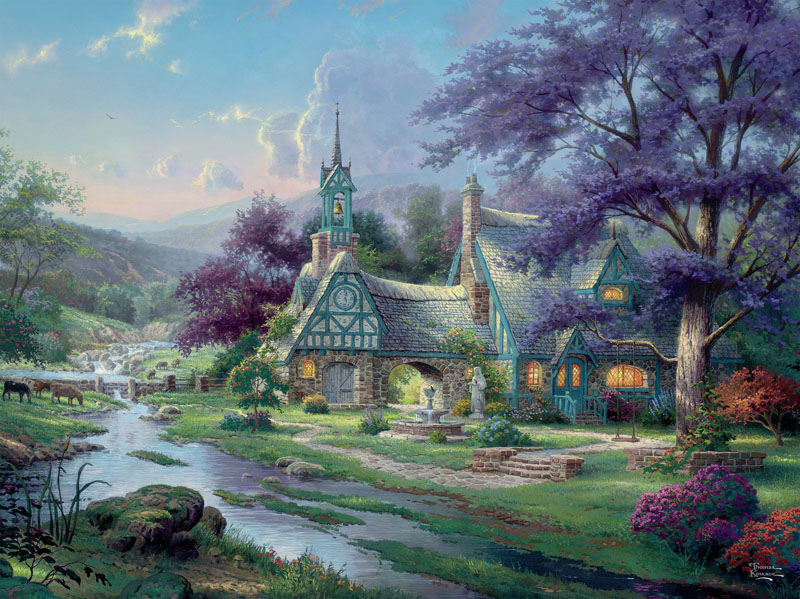
For while Kinkade's work is at best humdrum and technically adequate, its popularity tells us something about his public, about a desperate yearning for nostalgia that pervades parts of American life, a return to the safe glow of some imagined past. There were no lengthy obituaries in the quality press, critics did not line up to extol the beauty or the influence of his art. Kinkade's death went largely unnoted in the art world.

He also engaged in what he termed "ritual territory marking" at a California Disneyland hotel, urinating on a Winnie the Pooh figure.
#THOMAS KINKADE PUZZLE DIMENSION SERIES#
There were allegations of malpractice, and his company declared bankruptcy, unable to pay its creditors following a series of court judgments ordering him to pay $860,000 for defrauding the owners of two failed franchises.įollowing his separation from his wife and spiralling alcoholism, Kinkade's behaviour became erratic: he allegedly caused a scene at a Siegfried & Roy show in Las Vegas by repeatedly shouting "Codpiece!" at the ageing illusionists. In the years before his death, Kinkade's business and his life took a battering. Plans for further housing developments, alas, fell foul of the housing crisis. Peace, not pressure," the village offers four house designs, each named after one of Kinkade's daughters. A 101-home development in Vallejo, outside San Francisco, operating under the slogan: "Calm, not chaos. But arguably his only great artwork was " The Village, a Thomas Kinkade Community", unveiled in 2001. This wasn't just the usual art gallery giftshop schlock: Kinkade sealed a tie-in with La-Z-Boy furniture (home of the big butt recliner) for a Kinkade-inspired range of furniture. Kinkade's art also went beyond galleries through the "Thomas Kinkade lifestyle brand". Peter O'Toole, earning a crust playing Kinkade's artistic mentor, urges the young painter to "Paint the light, Thomas! Paint the light!".
#THOMAS KINKADE PUZZLE DIMENSION MOVIE#
The artistic credo was expressed best in the 2008 movie Thomas Kinkade's Christmas Cottage. Some galleries offered "master highlighters", trained by someone not far from the master himself, to add a hand-crafted splash of paint to the desired print and so make a truly unique piece of art, as opposed to the framed photographic print that was the standard fare. Clients would be ushered into a climate-controlled viewing room to maximise the Kinkadeness of the whole place, and their experience. They were the Thomas Kinkade experience – minus the alcohol and Valium, of course. You would see them in roadside malls in small towns, twinkly lights adorning the windows, and in bright shopping centres, sandwiched between skatewear outlets and nail bars.īut these weren't just galleries.

At their peak (between 19) there were 350 Kinkade franchises across the US, with the bulk in his home state of California. Kinkade's twee paintings of cod-traditional cottages, lighthouses, gardens, gazebos and gates sold by the million through a network of Thomas Kinkade galleries, owned by his company, and through a parallel franchise operation. At his height, in 2001, Kinkade generated $130m (£81m) in sales.

Kinkade was a self-made phenomenon, with his prints (according to his company) hanging in one in 20 American homes. Who could have imagined that behind so many contented visions of peace, harmony and nauseating goodness lay just another story of deception, disappointment and depravity, fuelled by those ever-ready stooges, Valium and alcohol?


 0 kommentar(er)
0 kommentar(er)
